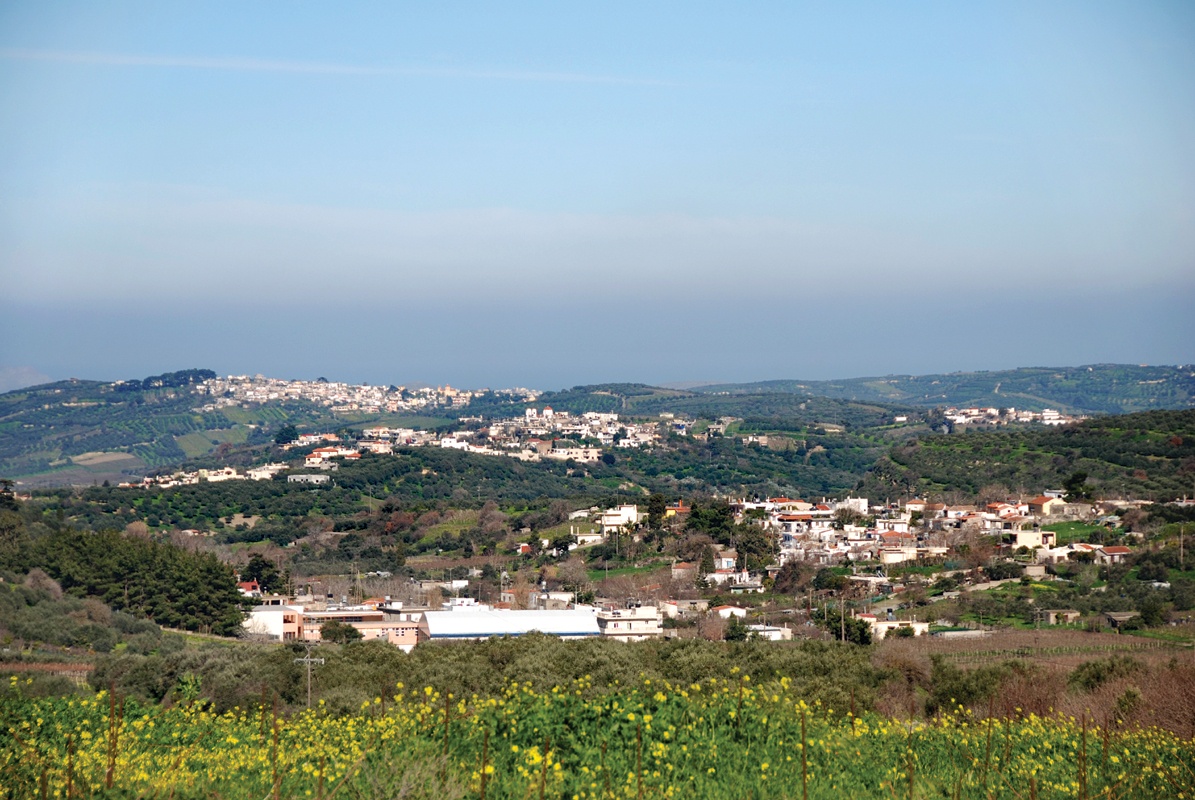
The hamlet of Agios Vasileios is built at the foot of Kefalas Hill at 360m and is one of the largest and most beautiful villages in the Municipality, positioned right at its centre. Its houses are built amphitheatrically affording a panoramic view of one of the most authentic Cretan landscapes of vineyards and olive trees.
The village of many churches
Old village locals say that a plague afflicted surrounding villages but never affected Agios Vasileios, because the surrounding churches protected it. Indeed, for religious tourists, Agios Vasileios is the destination, as here they will find many churches with a number of legends and stories accompanying them. At the centre of the village stands the church of Agios Vasileios (St. Vasileios), from which the village got its name. The church is decorated with murals that date back to the 15th century. There are also Agia Paraskevi (St. Paraskevi), Agia Kyriaki (St. Kyriaki), Agios Constantinos (St. Constantine), Agios Athanasios and Kyrillos (Saints Athanasios and Cyril). Noteworthy churches are those of Agios Antonios (St. Anthony) and Agia Pelagia (St. Pelagia), which have their own mural decorations, as well as the church of Agios Ioannis Prodromos (St. John the Baptist). The dedicatory inscription of the church of Agios Ioannis Prodromos displays the date 1291-1391.
At the beginning of the Spiliotissa Gorge (on the side of Agios Vasileios) you will find the Sinai convent of Panagia Spiliotissa. The chapel of the monastery is built on a rock, on which, according to tradition, an icon of the Virgin Mary was found. What remains of the murals on the rock in Panagia cave dates back to the 15th century. It seems that the monastery flourished at around 1600. It came under the jurisdiction of Sinai Monastery during the 1649-1669 period. Visits to the convent can be arranged (Tel: 2810 741370).
Apart from the churches, you can also admire the village itself, walking through its lanes and beautiful neighbourhoods, such as: Livadi, Plakoura, Kolonaki, Kara, Tourkogeitonia, Katrades and Geraki, as well as the fountains-reservoirs ‘Palaia Vrysi’, ‘Fountana’, Krini and the Spiliotissa watermills.



